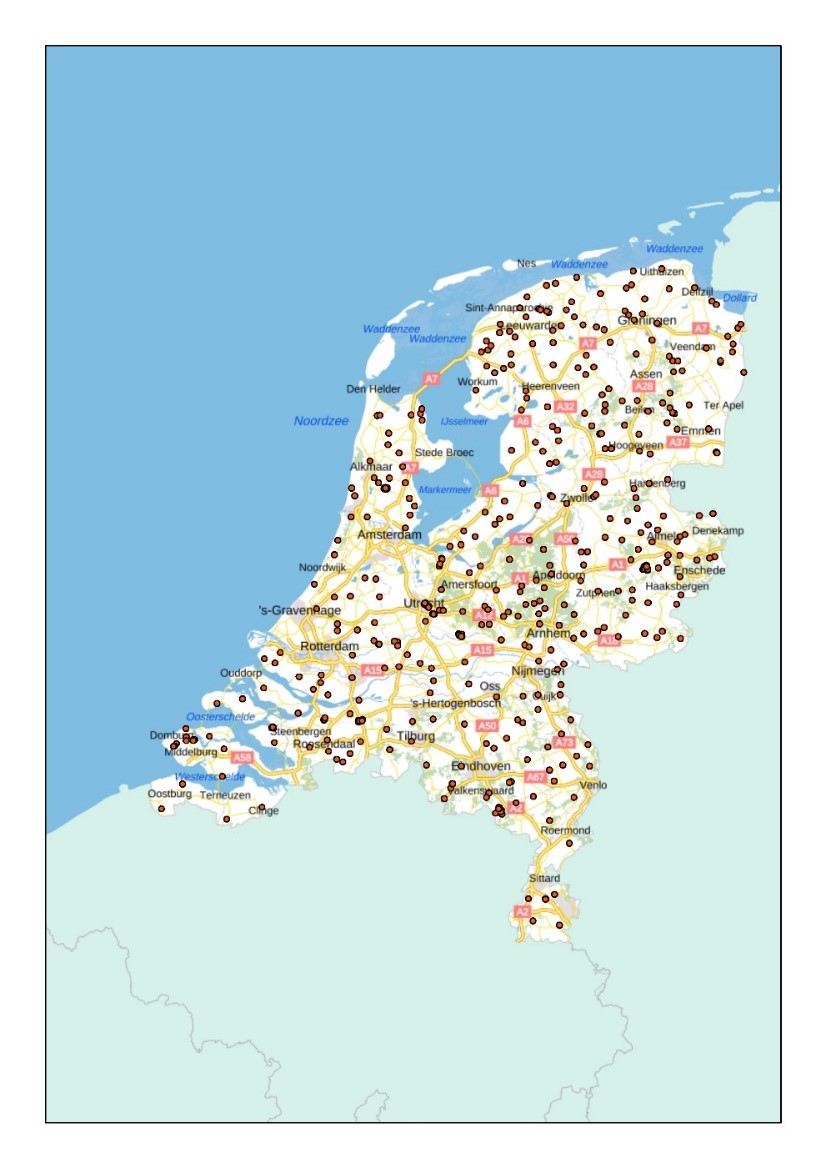Among the data you can request are the geochemical analyses of borehole research.
In the past few months, these data have been expanded with more than 1,500 geochemical analyses.

Locations of the 1,500 geochemical sediment analyses that have been added.
Geological Survey of the Netherlands, part of TNO, has added over 1,500 geochemical sediment analyses (or soil analyses), belonging to 500 different borehole surveys. It mainly concerns samples taken within the framework of environmental geochemical PhD studies. In most cases, there are two samples per borehole survey: a shallow sample from 0 to 20 cm below the surface and a deeper sample often from 100 to 120 cm below the surface. More than 200 determinations also originate from drilling at drinking water extraction sites, with the deepest sample at 183 m below the surface. The rest of the sample analyses were collected for various reasons.
The oldest analyses of all these new chemical sediment analyses date back to the early 1990s. It concerns many lead isotope analyses with which the origin of lead contamination can be traced. In addition, there are also over 100 determinations of exchangeable cations at the exchange complex and special determinations how sulphur is bound in peat.
The set of information in question is not part of the Dutch Key Register of the Subsurface (‘Basisregistratie Ondergrond’ or BRO) because it concerns borehole analyses for which the stipulations have not yet been included in the BRO. It is possible that these will be added to the set of stipulations in the BRO in the future. At that time we will examine the extent to which they can be incorporated into the BRO from archives. Until then, they are in any case available via DINOloket.
Read more about this in the explanation of chemical analyses.
Please contact us if you have any questions about geochemical sediment analyses.